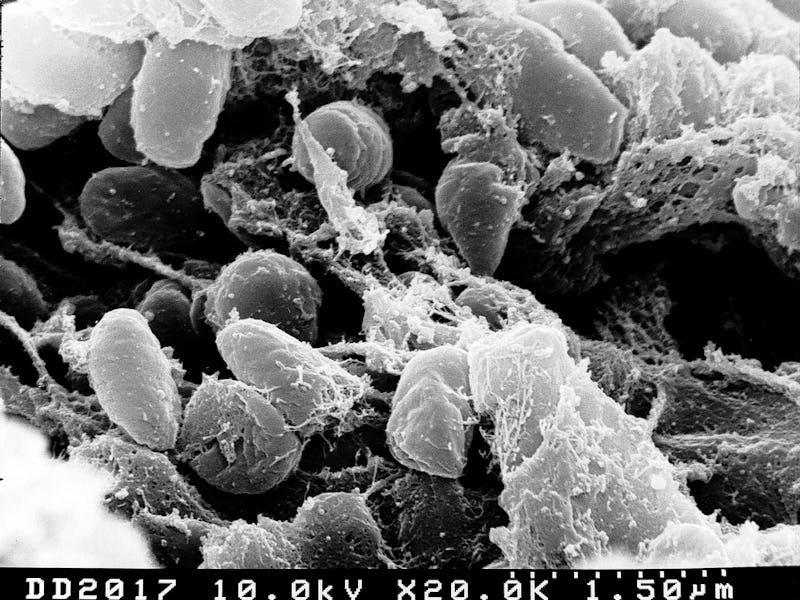5,000-Year-Old Strain of the Plague Hints at Ancient Origin of Human Killer
This discovery helps scientists understand how diseases evolve over time.

Five thousand years ago, a 20-year-old Swedish woman died from the plague. Now, scientists have discovered that the strain of Yersinia pestis that killed her is the oldest plague strain ever identified. This revelation gives researchers important insight into how the plague spreads across human populations, putting us one step closer to identifying the genetic origin of the plague.
Y. pestis is a naturally occurring bacterium which lives and replicates predominantly among wild rodents. It causes the disease plague, and different strains give rise to its three forms: bubonic, pneumonic, and septicemic. On Thursday, researchers announced in Cell that this newly discovered strain of Y. pestis contains the same genes that cause the deadly pneumonic plague today.
“We often think that these super pathogens have always been around, but that’s not the case,” senior author and metagenomics researcher Simon Rasmussen, Ph.D. explained Thursday. “Plague evolved from an organism that was relatively harmless. More recently, the same thing happened with smallpox, malaria, Ebola, and Zika.”
Previous research has revealed that the harmless organism from which Y. pestis diverged was Yersinia pseudotuberculosis, a soil bacterium that evolved over time to colonize fleas — and not kill them — eventually becoming the plague.
Scientists like Rasmussen study strains of ancient diseases so humans can gain a better understanding of how something harmless can become something extremely virulent. Plague is one of the deadliest bacteria that has ever affected humans — and while it doesn’t cause mass devastation like it once did, it still sickens humans today. In the United States, the bubonic form of the plague is reported between one and seven times per year.
Rasmussen and his colleagues identified this strain while examining publicly available genetic data on ancient humans, expressly looking for sequences similar to modern plague strains. That’s how they came across the genetic material of the Bronze Age Swedish woman: She, and another individual at the same gravesite, both died infected with this ancient strain. Her death date establishes the plague strain as the oldest found — previously, the oldest Y. pestis strain was pinned to two 3,800-year-old skeletons.
The team reasons that this particular strain diverged from the rest of Y. pestis around 5,700 years ago. That’s a crucial detail because previous researchers argued that the plague spread to Europe through massive migration movements from the Eurasian steppe. But that happened 5,000 years ago — around the same time as the woman’s death — and the divergence date is older. The study authors think this means that the plague came to northern Europe before the migrations, around the time that Neolithic settlements were collapsing and larger communities were rising.
The remains of the 5,000-year old woman.
These communities of 10,000 to 20,000 were a game changer for Europe — bringing in new jobs, technologies, and forms of trade. But they were also 10 times bigger than previous settlements, and with that size came poor sanitation and close quarters. Rasmussen says this scenario is a “textbook example of what you need to evolve new pathogens.”
Eventually, these new pathogens migrated to Sweden, infecting a rat or flea, which bit a young woman, ultimately causing her death.